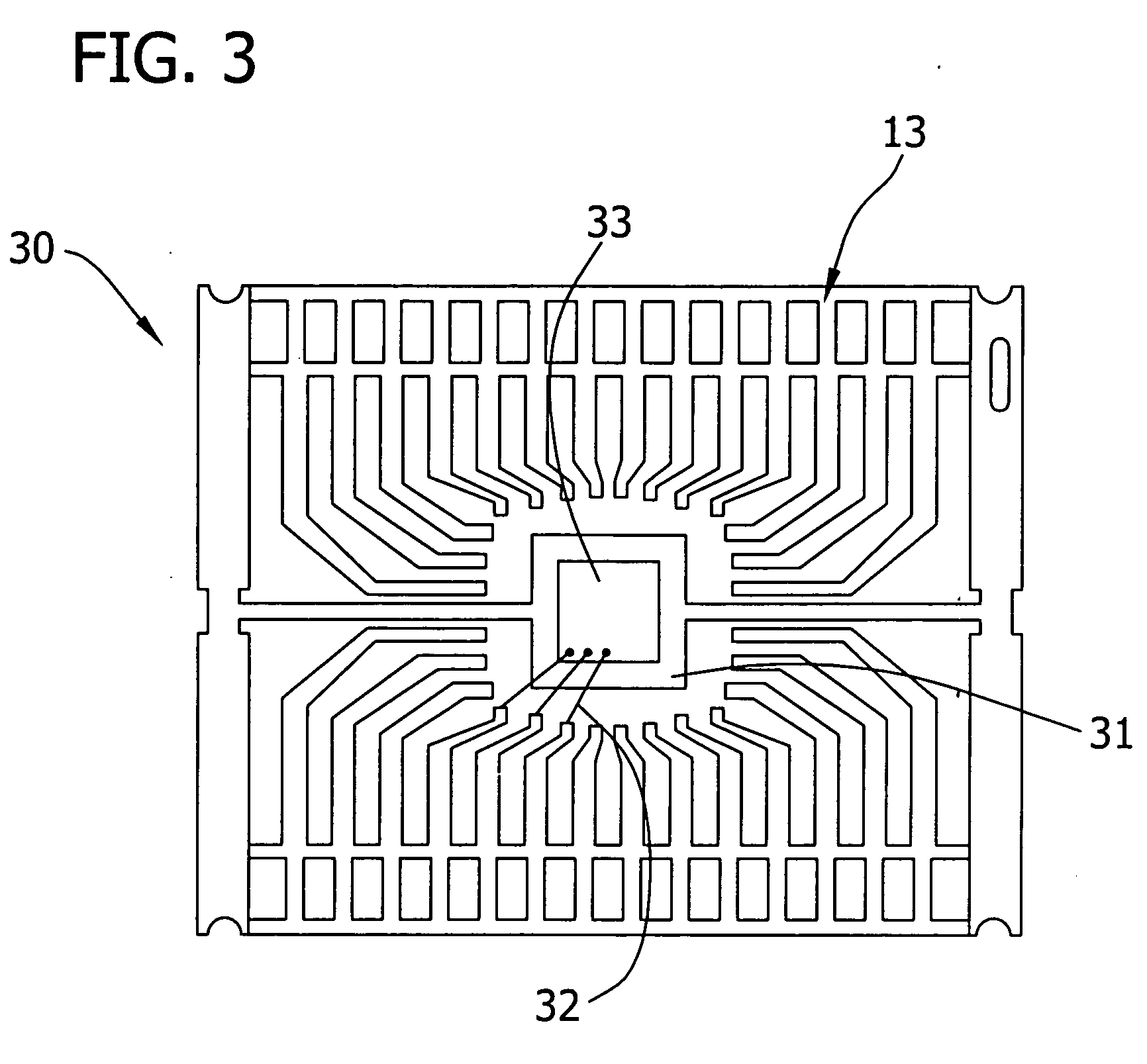Preserving solderability and inhibiting whisker growth in tin surfaces of electronic components
- Summary
- Abstract
- Description
- Claims
- Application Information
AI Technical Summary
Benefits of technology
Problems solved by technology
Method used
Image
Examples
example 1
[0035] Five samples were prepared by first electrodepositing a first metal layer of conformable nickel using the Sulfamex MLS plating system, available from Enthone, Inc. of West Haven, Conn., on a C19400 copper alloy substrate. To this end, an electrolytic bath was prepared comprising the following, in deionized water: [0036] Ni(NH2SO3)2— 319-383 g / L [0037] NiCl2*6H2O— 5-15 g / L [0038] H3BO3— 20-40 g / L [0039] CH3(CH2)11OSO3Na— 0.2-0.4 g / L
[0040] The electrolytic bath was maintained at a pH between about 2.0 and about 2.5. The bath was held at a temperature between about 55° C. and about 65° C. A current density between about 20 A / ft2 and about 300 A / ft2 for a time sufficient to apply a first metal layer of nickel alloy approximately 2 μm thick.
[0041] Next, a matte tin alloy coating was electrodeposited on each of the five samples using the STANNOSTAR plating system available from Enthone, Inc. To this end, an electrolytic bath was prepared comprising the following, in deionized wat...
example 2
[0046] The five samples prepared according to Example 1 were subjected to 1000 thermal shock cycles from about −55° C. to about 85° C. FIGS. 7-11 are photomicrographs of the samples after this thermal shock testing. FIGS. 7a and 7b, 100033 and 500× respectively, show growth of many tin whiskers of substantial size in the sample with a 10 μm thick tin alloy coating. FIGS. 8a and 8b, 1000× and 500× respectively, show growth of a few tin whiskers of notable size in the sample with a 3 μm thick tin alloy coating. FIGS. 9a and 9b, 1000× and 500× respectively, show growth of very few tin whiskers of negligible size in the sample with a 2 μm thick tin alloy coating. FIGS. 10a and 10b, 1000× and 500× respectively, show virtually no growth of tin whiskers in the sample with a 1 μm thick tin alloy coating. Similarly, FIGS. 11a and 11b, 1000× and 500× respectively, show virtually no growth of tin whiskers in the sample with a 0.5 μm thick tin alloy coating.
example 3
[0047]FIG. 12 shows a graph comparing the Whisker Index (WI) for each of the five samples prepared according to Example 1 after the thermal shock testing of Example 2. The WI for a tin alloy coating is a value that is defined as a function of the number of whiskers, the length of the whiskers, the diameter of the whiskers, and the “weighing factor” of the whiskers in a given area of a sample. The weighing factor helps differentiate short and long whiskers. Here, the WI for each of the five sample was determined using the 500× photomicrographs, 7b, 8b, 9b, 10b, and 11b. As indicated in FIG. 12, the WI increases dramatically from nearly 0 for the 2 μm sample to approximately 825 for the 3 μm sample, to substantially greater where the tin-based coating is above about 3 μm.
PUM
| Property | Measurement | Unit |
|---|---|---|
| Length | aaaaa | aaaaa |
| Length | aaaaa | aaaaa |
| Length | aaaaa | aaaaa |
Abstract
Description
Claims
Application Information
 Login to View More
Login to View More - R&D
- Intellectual Property
- Life Sciences
- Materials
- Tech Scout
- Unparalleled Data Quality
- Higher Quality Content
- 60% Fewer Hallucinations
Browse by: Latest US Patents, China's latest patents, Technical Efficacy Thesaurus, Application Domain, Technology Topic, Popular Technical Reports.
© 2025 PatSnap. All rights reserved.Legal|Privacy policy|Modern Slavery Act Transparency Statement|Sitemap|About US| Contact US: help@patsnap.com



